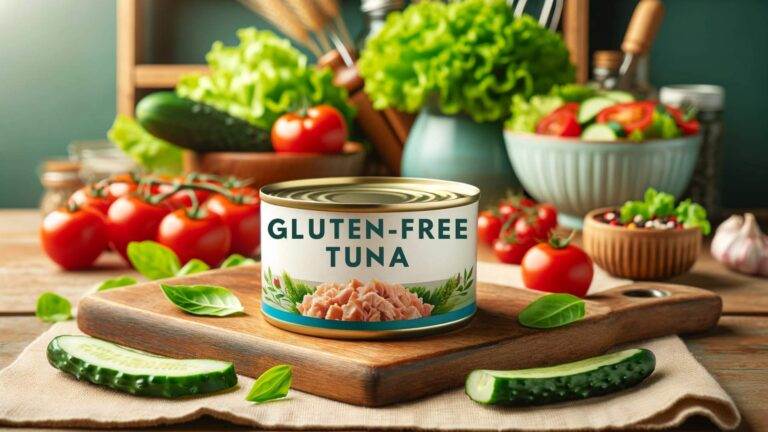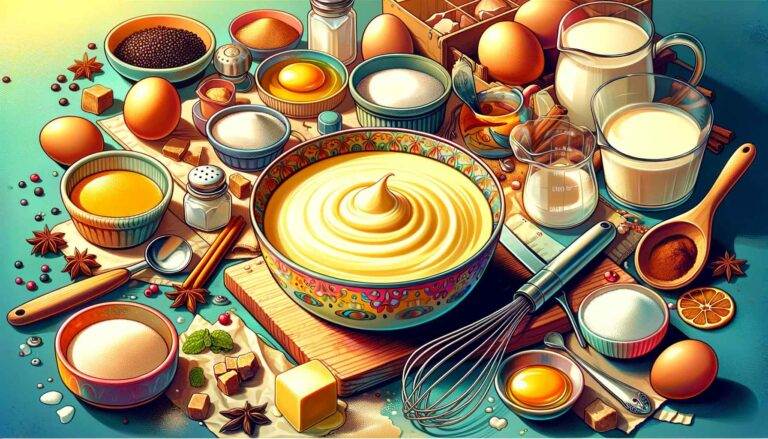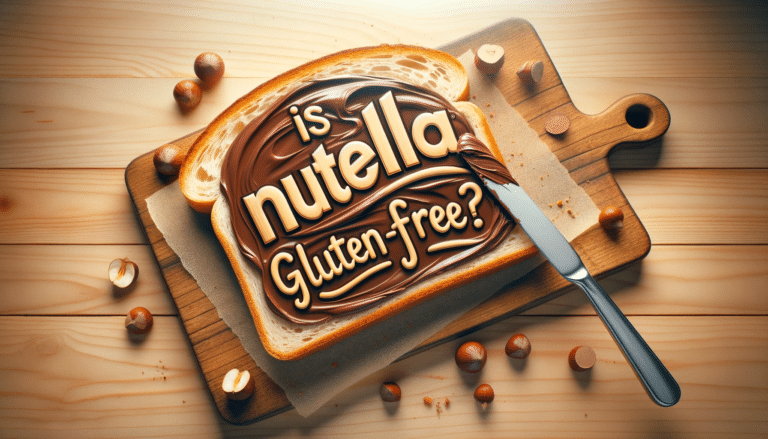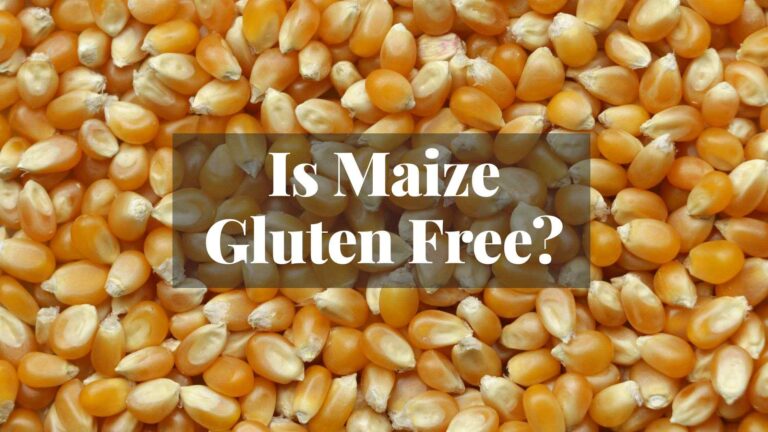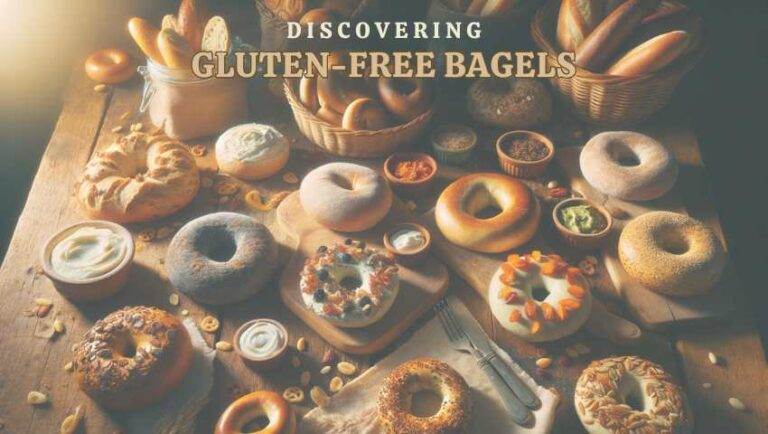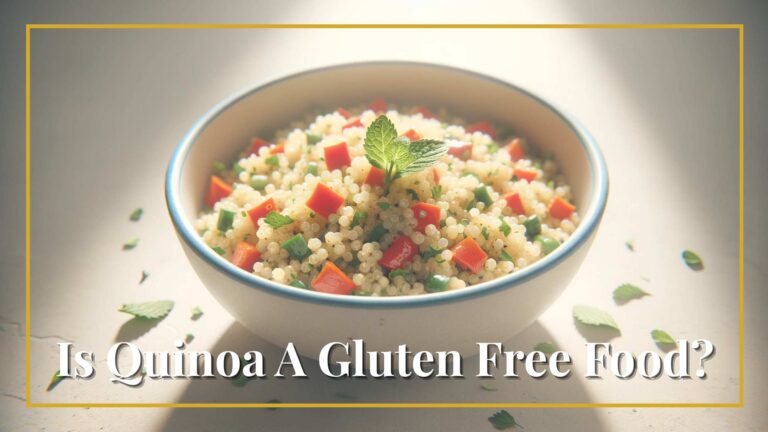Does Gluten Free Taste Different? – Not Always! Here’s Why…
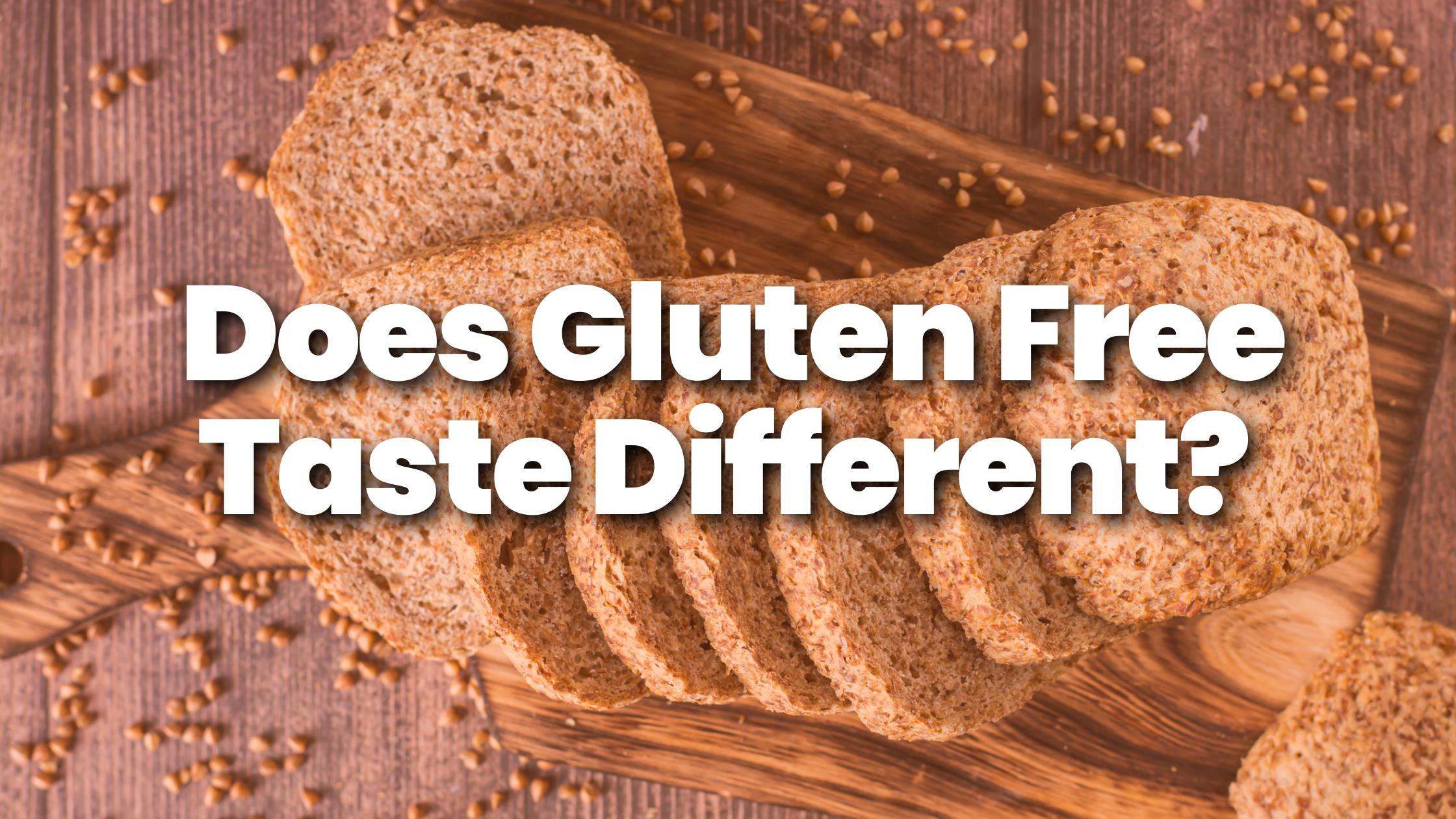
Are you wondering to yourself – does gluten free taste different? Oh yes, it sure does, but no always! Ever since my celiac disease and IBS diagnosis, my food-loving life has taken a whole new spin.
It took some patience, some bravery, and a lot of taste tests to see that gluten-free doesn’t mean boring or bland. Actually, it can be pretty yummy.
Ready to join me on this tasty adventure and find out the many surprises of gluten-free living? Keep reading! I promise you, the good stuff is just around the corner.
Why Would Gluten-Free Food Taste Any Different in the First Place?
There are a few reasons why removing gluten from a recipe or product can change the way it tastes:
When You Remove Gluten, Texture Takes a Hit
Two proteins found in wheat, glutenin and gliadin, form the stretchy gluten strands that gives bread and other baked goods their satisfying chewy texture.
Without gluten, achieving that tender yet springy crumb can be nearly impossible. Gluten also helps baked goods hold their shape and rise properly.
Many gluten-free baked goods use additives like xanthan gum or guar gum to mimic that binding quality, but the texture is often much denser and crumblier.
Alternative Grains Have Their Own Distinct Flavors
With wheat flour off the table, gluten-free baking relies on other gluten-free flours like almond, coconut, brown rice, buckwheat, teff, or amaranth.
Each imparts a distinct flavor profile. Often recipes combine several alternative flours to balance the flavors. But subtle aftertastes of coconut or nuttiness still come through.
Extra Sugar and Fat Tries to Pick Up the Slack
To enhance flavor and soften the texture of baked goods without gluten, many gluten-free recipes call for additional fat from ingredients like eggs or oil.
More sugar is also added to counteract any grainy, mealy texture. So gluten-free products often end up higher in calories, sugar, and fat compared to their gluten-containing counterparts.
It’s All in Your Head? The Power of Expectation
There’s likely some psychology involved, too.
When you expect a gluten-free cookie won’t taste as good before you even try it, you likely focus more on flaws than someone blindly tasting it.
Our perception is strongly influenced by expectations.
The Great Gluten-Free Taste Test: What Do Actual Experiences Show?
Beyond theorizing about causes, what do people actually report when tasting gluten-free foods?
The feedback is mixed, but trends toward noticeable taste differences in certain categories.
Real Talk: What Gluten-Avoiders Are Saying
In gluten-free forums and communities, you’ll find plenty of anecdotes about store-bought gluten-free bread tasting like cardboard, crumbling apart, or being oddly sweet.
Many lament the sacrifice in flavor. But others share tips on brands or recipes that come close to regular wheat bread when prepared properly.
Surveys and Studies Weigh In
Controlled taste studies find participants generally prefer the taste of wheat bread compared to gluten-free loaves, noting density, dryness, and off-flavors.
However, studies of gluten-free cookies and muffins found smaller differences, with some gluten-free versions rated equal to or better than wheat-based in sweetness, moisture, and overall acceptability.
Blind Taste Tests Don’t Lie
When consumers try identical gluten-free and wheat versions of foods without knowing which is which, they sometimes rate the gluten-free just as favorably.
So perception and expectations do play a role in reported taste differences. But with bread, the structural differences are hard to mask so taste preference for wheat versions persists.
The Greatest Gluten-Free Culinary Challenges
Through my own kitchen experiments, I’ve learned that some gluten-free foods are much more difficult to perfect flavor-wise. Here are the biggest challenges:
Doing Bread Without Gluten? Yikes!
Getting a tasty loaf of gluten-free bread is the holy grail. The lack of gluten protein makes it extremely difficult to replicate the air pockets, fluffy crumb, and chewy yet tender texture of wheat bread.
Most loaves turn out dense and brick-like. The flavor can range from underwhelming to excessively sweet depending on additions meant to mask the gluten absence.
Baked Goods Lose Their Magic
Cookies, cakes, pie crusts – gluten provides the structure and binding that makes these items so pleasurable.
Replacing it requires multiple gluten-free flours, gums, starches, and other substitutions that make texture crumblier and more dry.
The flavor isn’t bad, but doesn’t have the same indulgence factor.
Pasta Just Isn’t the Same
Rice pasta and other gluten-free noodles are notorious for becoming mushy, sticky texture.
The somewhat sweet, neutral taste just can’t compare to hearty semolina wheat pasta.
Lentil and chickpea pastas come closer, but most gluten-free pasta is middling at best taste and texture-wise.
Tricks of the Gluten-Free Trade: How Manufacturers Get the Taste Right
Big food companies have put major R&D resources into improving the flavor and texture of mass-market gluten-free products. They’ve gotten creative with these tricks:
Mimic Wheat Flour? These Blends Come Close
Companies like King Arthur and Bob’s Red Mill use precise mixes of rice flour, tapioca starch, sorghum flour, millet flour and more to closely mimic the protein content, binding ability, and versatility of wheat flour.
Using these premixed blends makes gluten-free baking easier and tastier.
Binders and Gums to the Rescue!
Additions like xanthan gum, guar gum, locust bean gum or psyllium husk mimic the stretchy texture and moisture retention provided by gluten. This helps prevent a gritty, crumbly texture and improves moisture.
Boosting Flavor with Zesty Zing
Without the hearty flavor of wheat flour, bakers add in extra vanilla, cinnamon, nutmeg, cocoa, citrus zest, poppyseeds, and other pungent flavors to excite the palate. Sweetness levels are also bumped up.
Play Up the Positives of Non-Gluten Grains
Rather than fighting against the intrinsic flavors of gluten-free flours, some brands spotlight them. Coconut flour lends a tropical vibe to cakes.
Buckwheat and teff have a pleasant malty, earthy taste when allowed to shine.
Homemade Gluten-Free Done Right: My Lessons Learned
Bakery-style gluten-free bread that rivals wheat-based is tough without commercial ovens and equipment.
But there are tricks for making homemade gluten-free baked goods and dishes that don’t sacrifice too much on taste:
Blend Flours Like a Pro
Mix 2-3 gluten-free flours like almond, oat, chickpea, and tapioca to create cohesion and a taste profile closer to wheat. Add 2-3% xanthan gum to help it bind and rise.
Get Eggy with It
Extra eggs provide richness, protein, moisture, structure, and flavor that prevent dense or dry baked goods.
Patience Pays Off
Allow time for moisture distribution after baking. Gluten-free items from the oven should rest 10-15 minutes for moisture to absorb evenly throughout.
Spice Things Up!
Cinnamon, nutmeg, ginger, vanilla and other spices add layers of flavor to make up for any wheat flour taste that’s missing. A little lemon or orange zest adds brightness too.
The Moment of Truth: Does Gluten Free Taste Different?
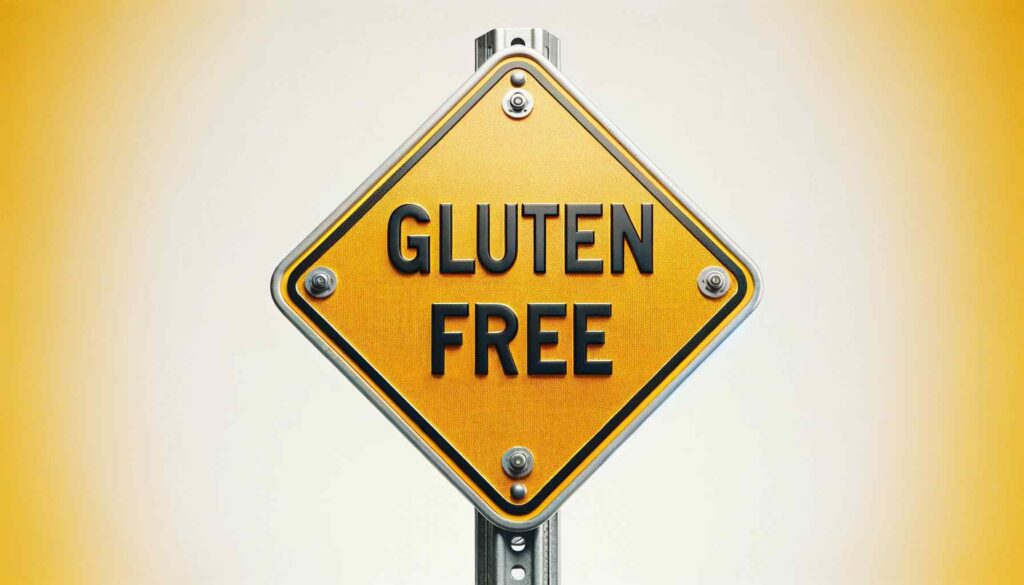
So after all this, what’s the verdict? Here’s what I now know:
The Evidence is In: Sometimes Yes, Sometimes No
Certain categories like commercial bread and pasta are nearly impossible to replicate with gluten-free flours. So in those cases, yes – gluten-free often tastes worse.
But for foods like cookies, muffins, pancakes and cakes, it’s totally possible to achieve standout flavor and texture without gluten.
It Will Probably Never Taste Exactly the Same
Gluten provides unique elasticity and binding. Removing it fundamentally changes the structure and taste in small ways.
The goal is delicious gluten-free food – not seeking identical flavor to wheat-based versions.
But it Can Still Taste Darn Good!
Maybe I’ll never again enjoy perfect flaky croissants or chewy pizza crust. But there are so many naturally gluten-free foods and cuisines that are full of incredible flavor.
And with care, even baked goods can impress gluten-free eaters and folks who can enjoy gluten alike. It’s about celebrating the taste possibilities, not mourning what’s lost.
I’m still on my gluten-free flavor journey, learning new tricks every day. My taste buds have so much left to explore.
While gluten-free challenges remain, focusing on all the flavorful foods I can eat makes living with celiac disease more delicious. I hope these lessons help other gluten-free eaters embrace the tasty possibilities too!
Disclaimer: This content is based on my personal experience as an individual diagnosed with celiac disease and IBS (Irritable Bowel Syndrome) who follows a strict gluten-free diet. This does not constitute medical advice. Please consult a medical professional, nutritionist, or qualified dietitian for personalized, professional advice.

